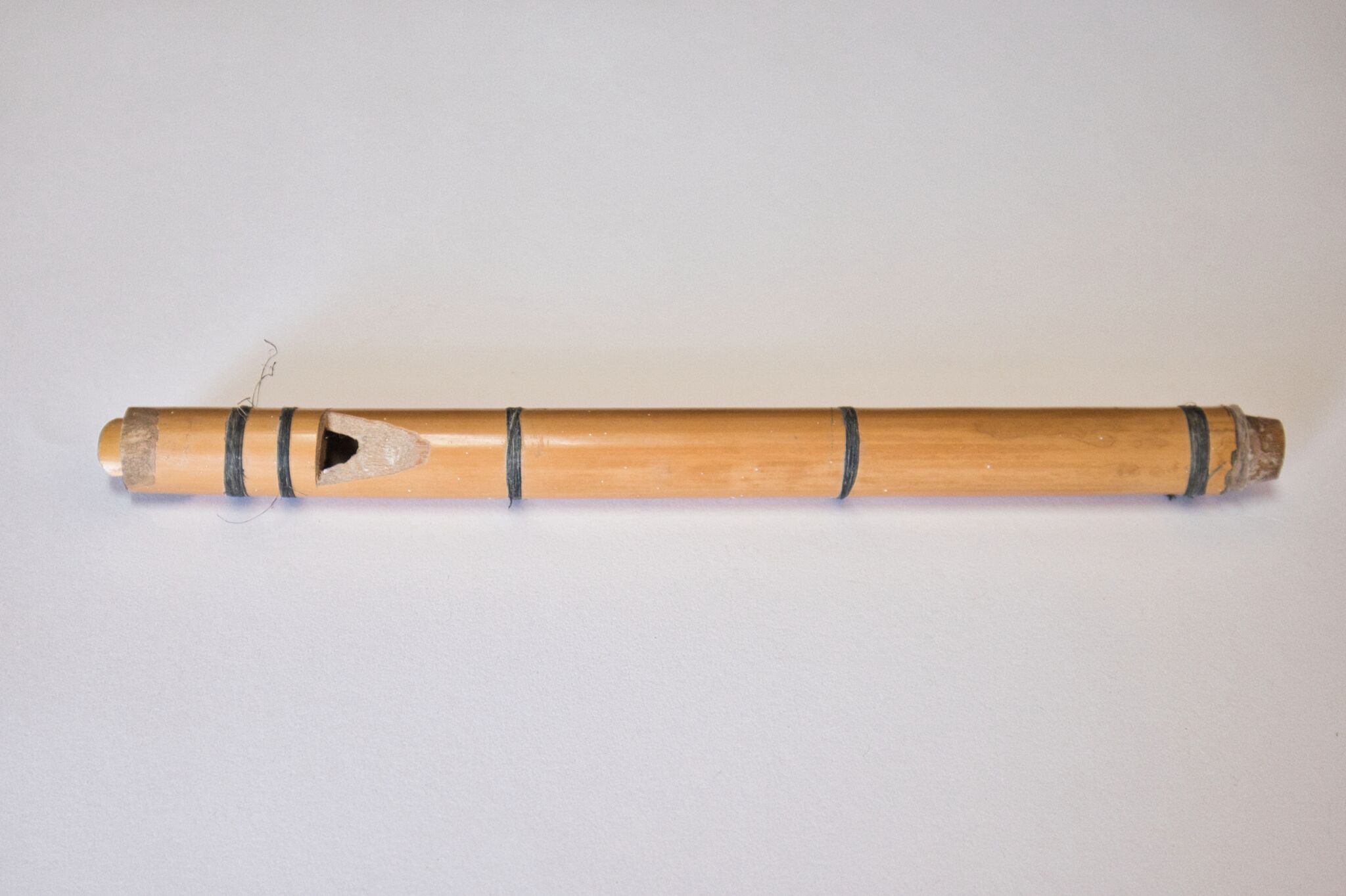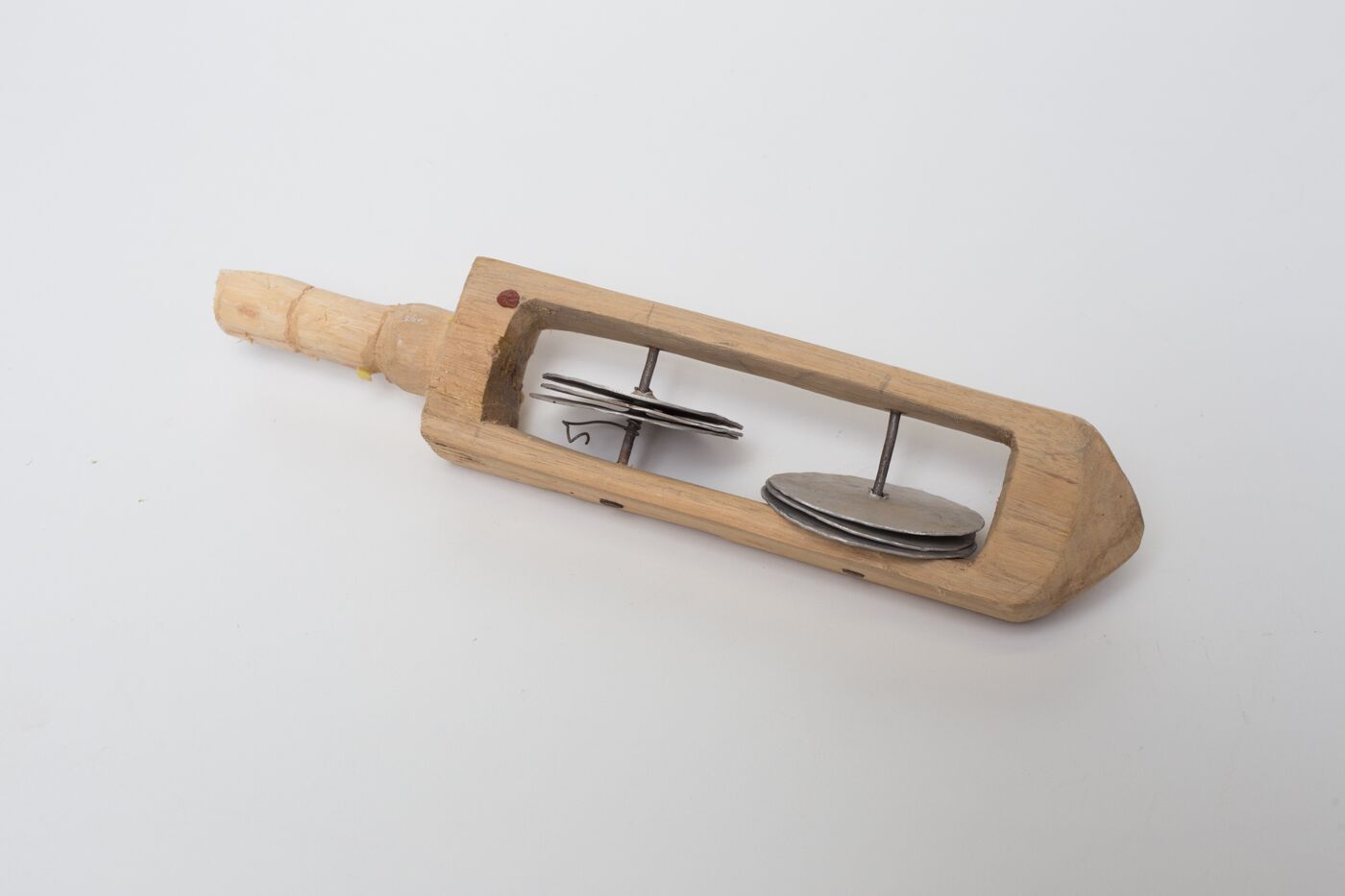-
 Tambor de aguaDownload
Tambor de aguaDownload
In Yaqui language it is called Ba'a bwéjai or ba'apo bwéjai; The water drum is a percussive idiophone instrument made up of four pieces: a large clay pot, one half of the dry fruit of the bule known as jícara, a percussion stick and a cotton cord to hold the jícara to the pot. For its operation, the jícara is placed downwards on the large clay pot with water almost up to its edges and placed on the ground; the jiponleo ba'a (person who plays the water drum) plays the drum with his right hand and holding the jícara with his left. The resulting sound forms the rhythmic basis of the Deer dance and is audible over great distances. The symbolism that is most attached to the use of this instrument is related to fertility, that is, water represents the fertiliser of mother earth and the jícara is the quintessential container for water, the only travel companion of the spirit in its way to the father, after this life (Varela, 1986). According to the myth of the Deer dance, the sound of the Ba'a bwéjai represents the heartbeat of the Deer. When listening, it gives the entrance to the dancer to start his interpretation. The assumption of the Spanish origin of this instrument, of which there are neither ancient nor modern copies, is ruled out. On the other hand, in this type of water drums, historically there are records of use by various ethnic groups in North America, South America and South Africa (Varela, 1986).
Metadata
Title
Water Drum
Alternative title
Báa jiponia o Bajiponia
Creator
Yaqui tribe
Created
2008
Description
Original object (physical):
Dimensions: Casserole 15.5 X 45 X X 15.5 ; Jícara 10.5 X 22 X 23 and Striker 2.5 X 28 X 2.5 cm. cm.
Technique: Clay and wood
Description
In Yaqui language it is called Ba'a bwéjai or ba'apo bwéjai; The water drum is a percussive idiophone instrument made up of four pieces: a large clay pot, one half of the dry fruit of the bule known as jícara, a percussion stick and a cotton cord to hold the jícara to the pot.
For its operation, the jícara is placed downwards on the large clay pot with water almost up to its edges and placed on the ground; the jiponleo ba'a (person who plays the water drum) plays the drum with his right hand and holding the jícara with his left. The resulting sound forms the rhythmic basis of the Deer dance and is audible over great distances.
The symbolism that is most attached to the use of this instrument is related to fertility, that is, water represents the fertiliser of mother earth and the jícara is the quintessential container for water, the only travel companion of the spirit in its way to the father, after this life (Varela, 1986). According to the myth of the Deer dance, the sound of the Ba'a bwéjai represents the heartbeat of the Deer. When listening, it gives the entrance to the dancer to start his interpretation.
The assumption of the Spanish origin of this instrument, of which there are neither ancient nor modern copies, is ruled out. On the other hand, in this type of water drums, historically there are records of use by various ethnic groups in North America, South America and South Africa (Varela, 1986).
Format
Still image / jpg
Spatial
Sonora , Cócorit
Temporal
2001 - 2010
Is part of
Music and dance room, Museum of the Yaqui people
Provenance
Museum of the Yaqui people. Sinaloa and Obregon No. 200, Cocorit, Cajeme, Sonora
Acquired for the reopening of the museum in the town of Cócorit. It is exhibited in the traditional festival room of the Museum.
Language
eng , yaqui
Date
2021-09-28
Identifier
Web Catalogación Obregón 2016 - 2713
ISC-CGPC-MY-0018
RS-OM-MEY-18
Relationship
Violin | Deer dancer | Pascola dancer | Flute | Pascola Mask | Pascola Drum | Moth Cocoon Ankle Rattles Pascola Length | Drum
References
Varela-Ruiz, Leticia T. (1986). La música en la vida de los yaquis . Sonora: Secretaría de Fomento Educativo y Cultura
Contributor
Sonoran Institute of Culture
Casanova, Juan (photography)
Buitimea Flores, Teodoro; Ruiz Félix, José María (investigation)
Valencia, Carlos ; The Yaqui Pride Project (translation to english)
License

This work is licensed under a Creative Commons Attribution-NonCommercial-ShareAlike 4.0 International License.
Rights
Sonoran Institute of Culture



